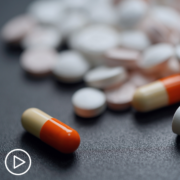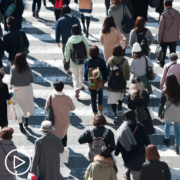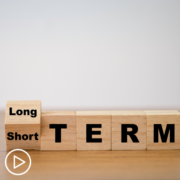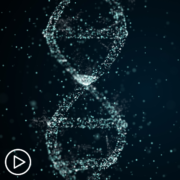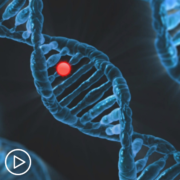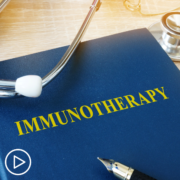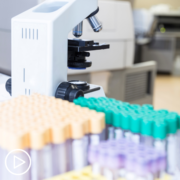The Importance of the FLT3 Mutation in AML
The Importance of the FLT3 Mutation In AML from Patient Empowerment Network on Vimeo.
What do acute myeloid leukemia (AML) patients need to know about FLT3 mutation? Dr. Naval Daver from the University of Texas MD Anderson Cancer Center discusses considerations about the mutation. Learn about the incidence of the FLT3 mutation, risk of relapse, and treatment options.
[ACT]IVATION TIP from Dr. Daver: “ it is very important to know the status of the FLT3 the mutation, both in diagnosis to see if one would benefit by the addition of the FLT3 inhibitor to the frontline induction chemo as well as in relapse because this would open up the option for FLT3 inhibitor targeted therapies, which would probably have the best chance of response and long-term outcomes.“
Download Resource Guide en español
Related Resources:
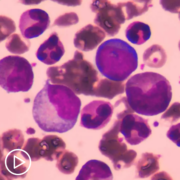
|

|
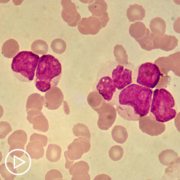
|
Transcript:
Art:
Dr. Daver, for AML with a FLT3 mutation, what have we learned, and what is currently being investigated?
Dr. Naval Daver:
AML with the FLT3 mutation is very important from both prognostic and from therapy perspective, prognostically, this is considered to be one of the high-risk mutations, it’s also one of the most frequent mutations in AML in, seen in about 30 to 35 percent of younger and about 15 to 20 percent of older patients with AML, and these patients often have very prolific disease, elevated white count leukocytosis. And without the addition of FLT3 inhibitors, there is a high risk of relapse and a short overall survival.
Over the last 15 years, a number of targeted therapies called the FLT3 inhibitors have emerged, these started with the first-generation FLT3 inhibitors drugs, such as lestaurtinib and sorafenib (Nexavar), now we have the second-generation FLT3 inhibitors, this includes drugs like gilteritinib (Xospata), quizartinib, and crenolanib which are more potent, specific, and better tolerated.
The first study that showed that the incorporation of FLT3 inhibitors improves outcome was a study called RATIFY Study, this is a frontline study looking at newly diagnosed FLT3 mutated younger patients where we added the FLT3 inhibitor midostaurin (Rydapt or Tauritmo), which is the first-generation FLT3 inhibitor to the standard induction chemo versus a placebo, added to standard induction chemo, induction chemo being standard of care to that time and this showed that in the addition of FLT3 inhibitor to induction chemo did improve remission rates and overall survival as compared to induction, and led to the approval of the FLT3 inhibitor midostaurin in the frontline setting.
Since then, two other FLT3 inhibitors, second-generation potent FLT3 inhibitors drugs called gilteritinib, and lestaurtinib have also been evaluated. Gilteritinib, in a relapsed setting where single-agent gilteritinib, has given 50 to 60 percent response rates and has been extremely well-tolerated and much better than any other salvage treatment in the FLT3 space that we have ever seen, and in the frontline setting quizartinib and second-generation inhibitor also very recently, just a few months ago, there was data showing the combination of his art with intensive chemotherapy improved survival as compared to intensive chemotherapy alone.
And so we think we are…they will be a third for the inhibitor to get approved, so there’s been a lot of progress overall in the three space, and there are other newer FLT3 inhibitors also in early clinical investigation that we think could eventually be as part or even better, the activation point related to this question is that, for the inhibitors have dramatically improved outcomes, both in the frontline setting when added to traditional backbone intensive chemotherapy as well as potentially lower intensity therapy, as well as in the relapsed refractory setting, and it is very important to know the status of the FLT3 the mutation, both in diagnosis to see if one would benefit by the addition of the FLT3 inhibitor to the frontline induction chemo as well as in relapse because this would open up the option for FLT3 inhibitor targeted therapies, which would probably have the best chance of response and long-term outcomes.

